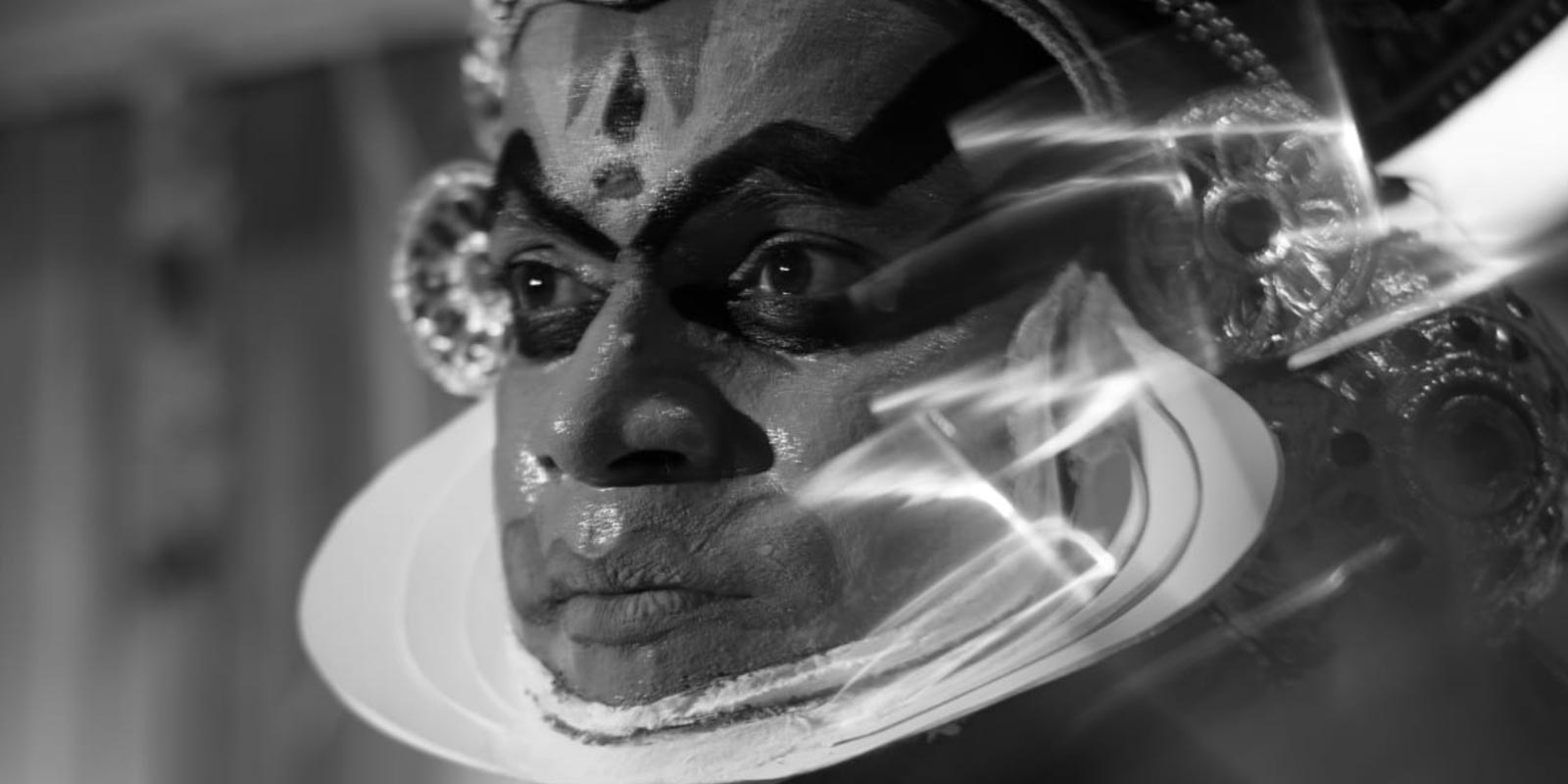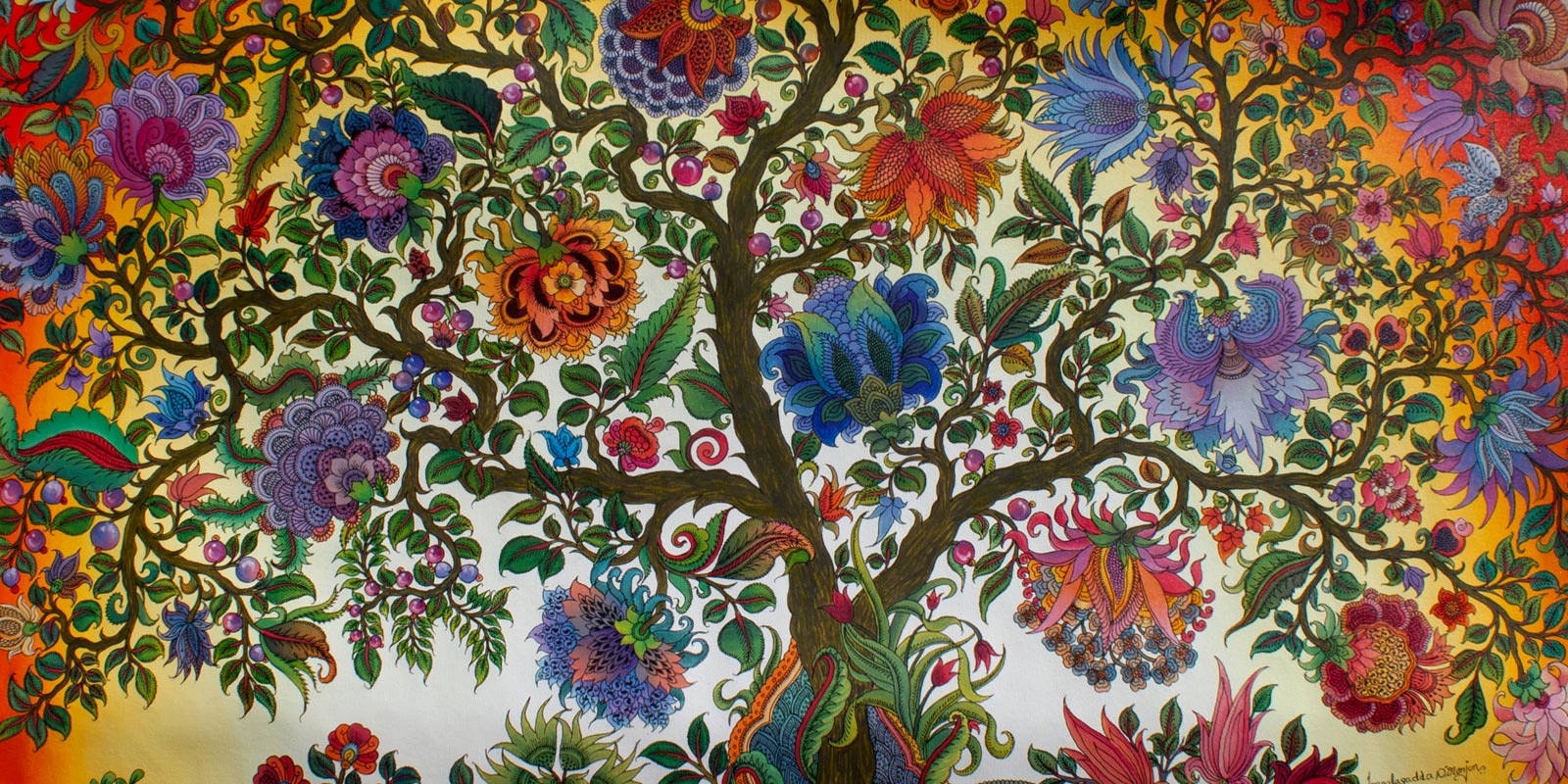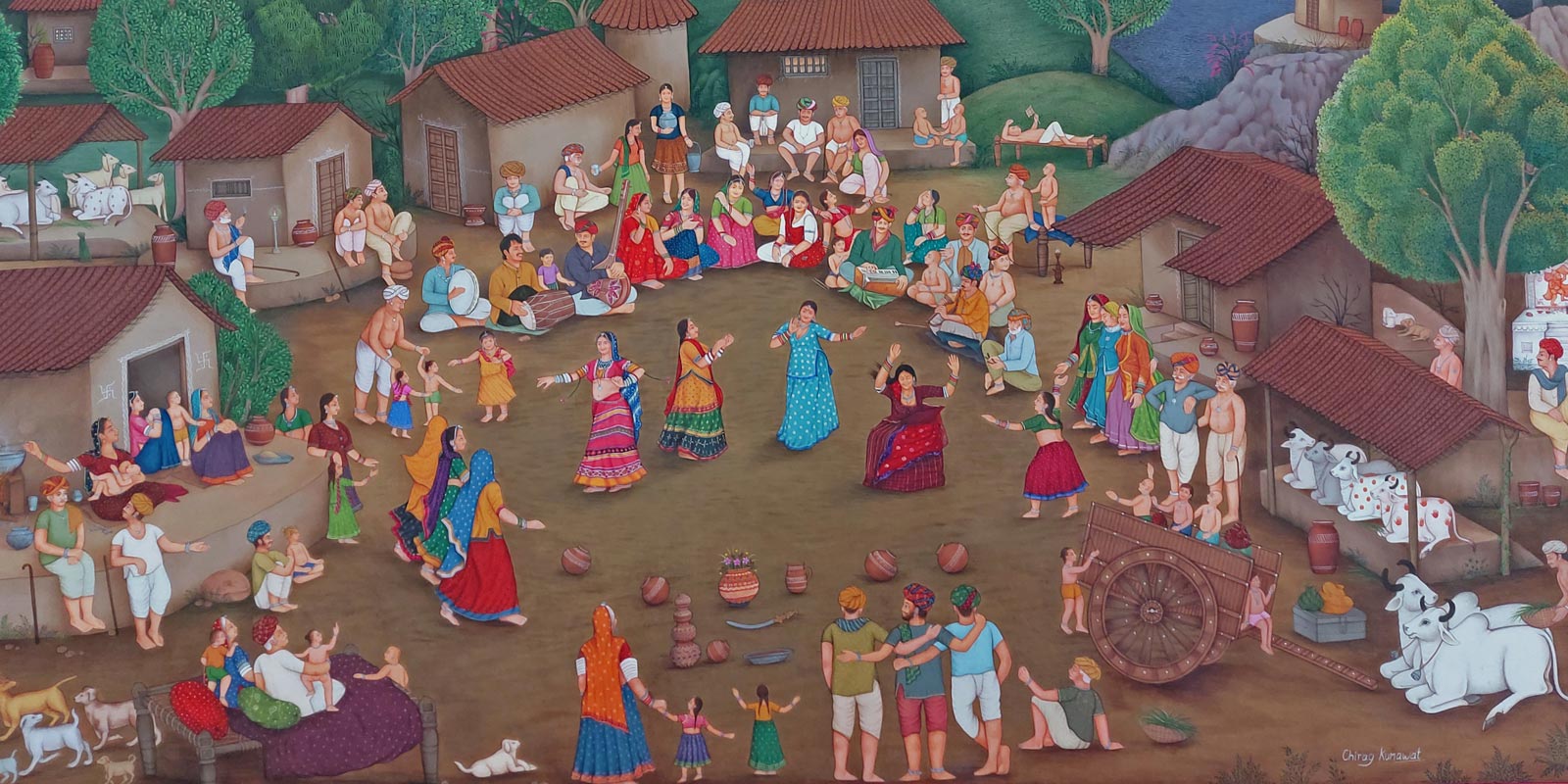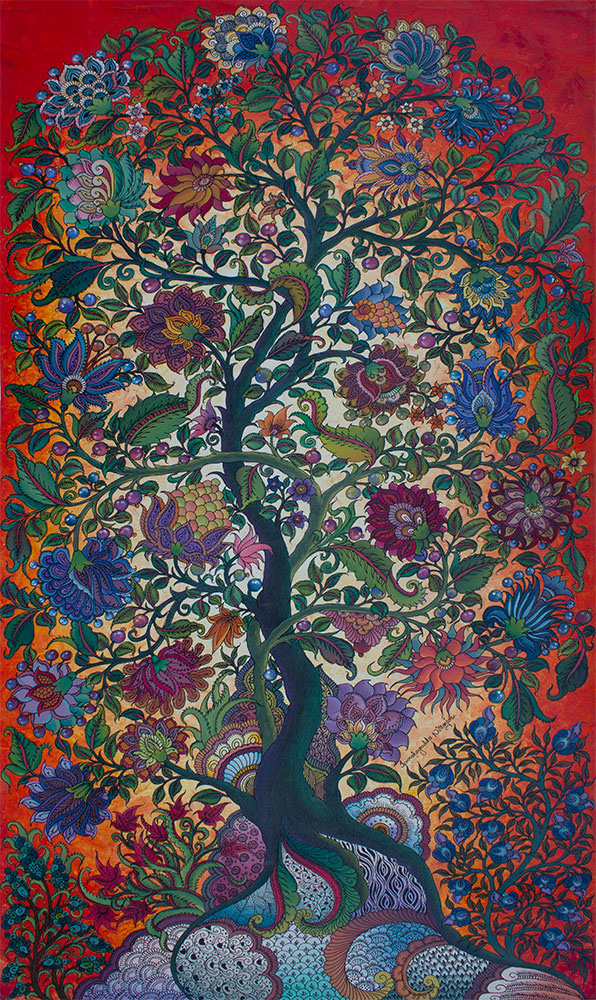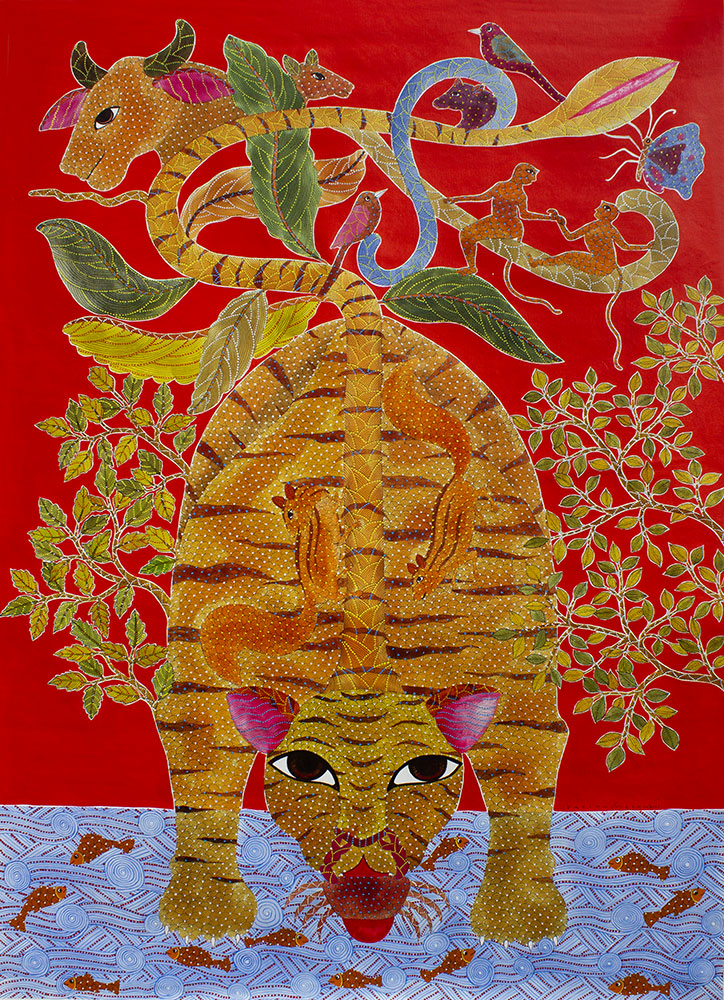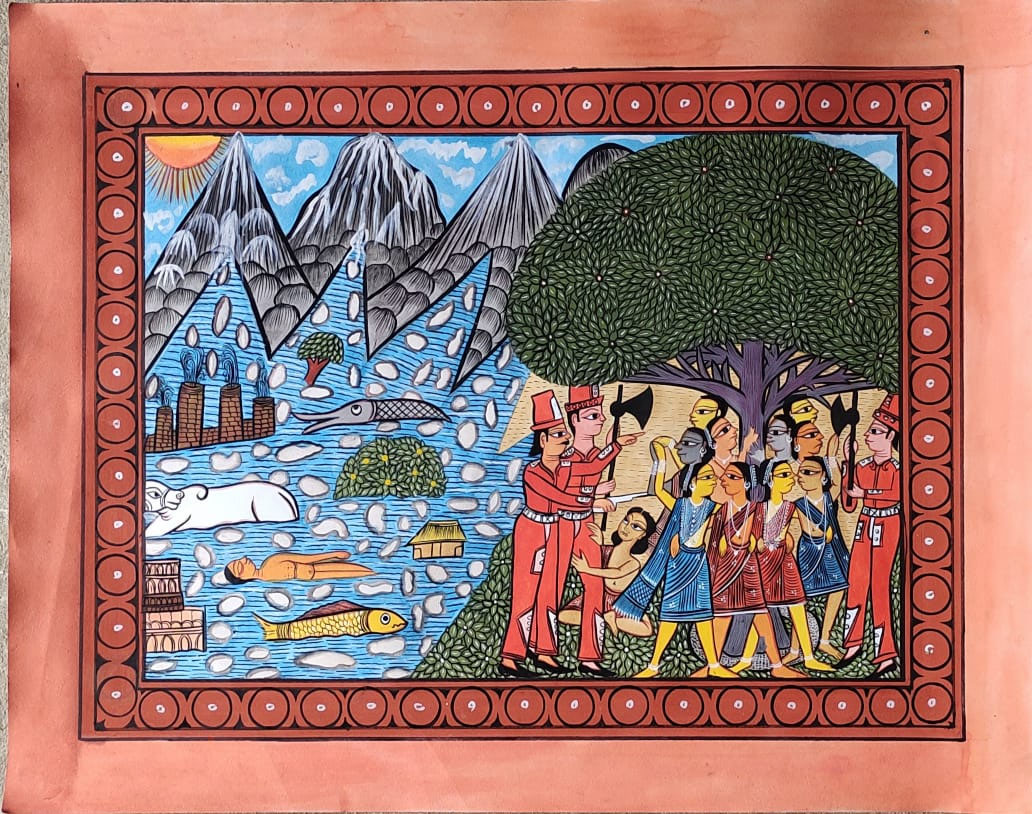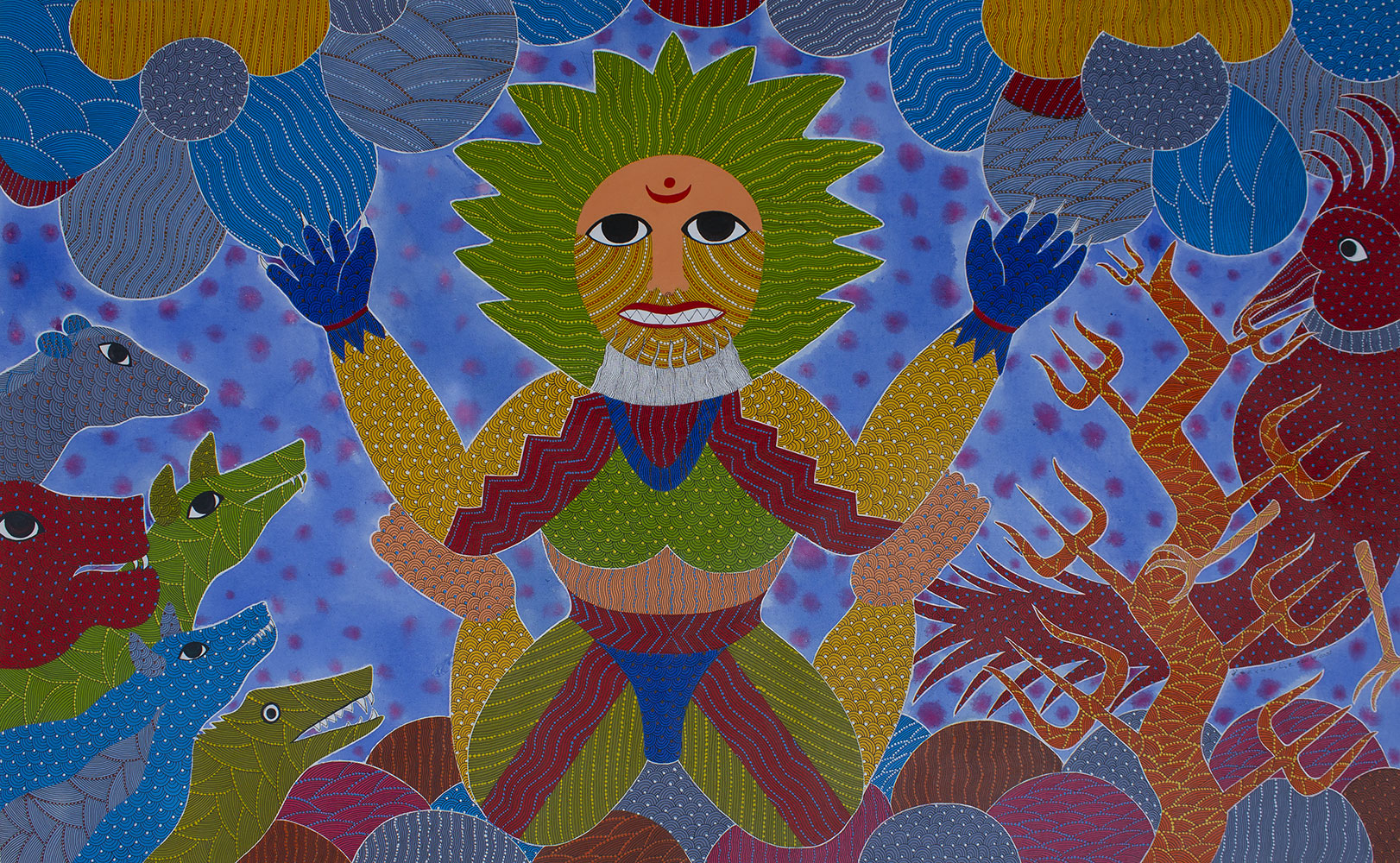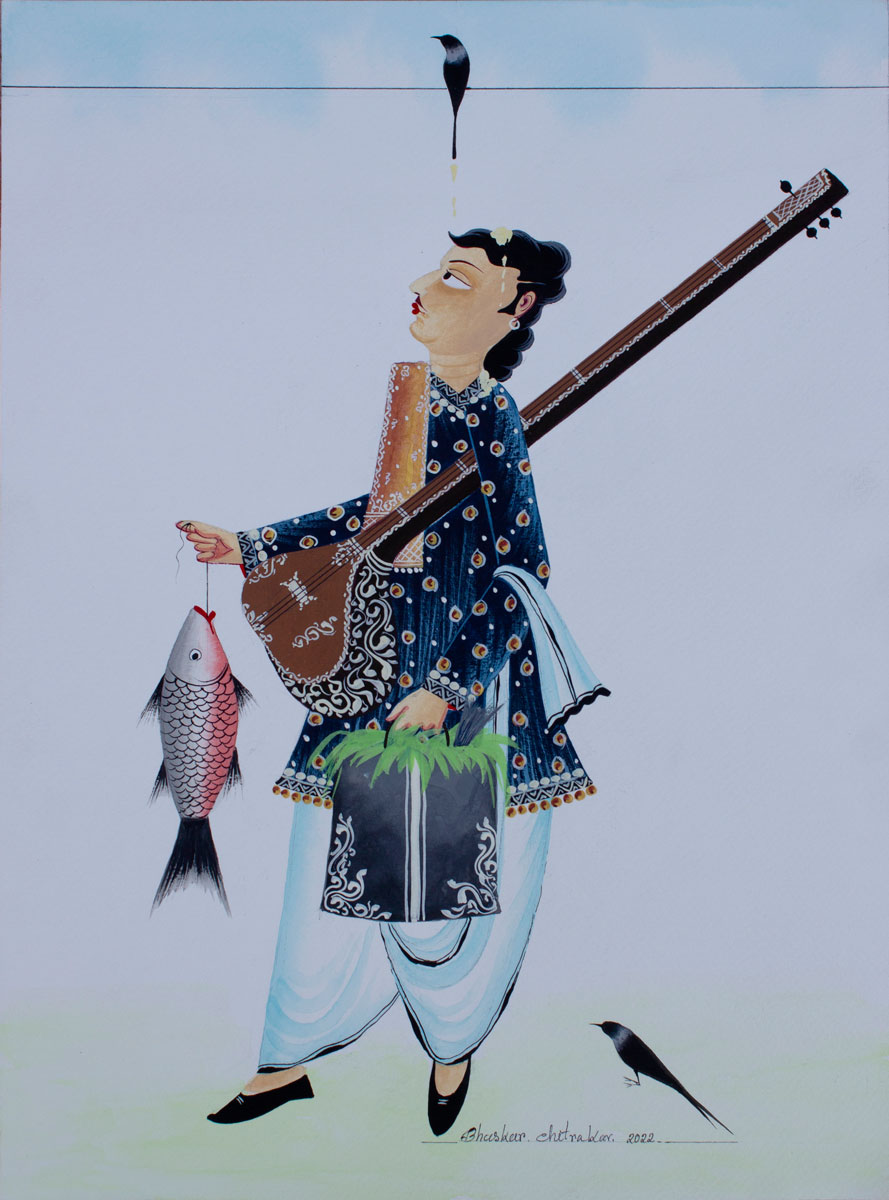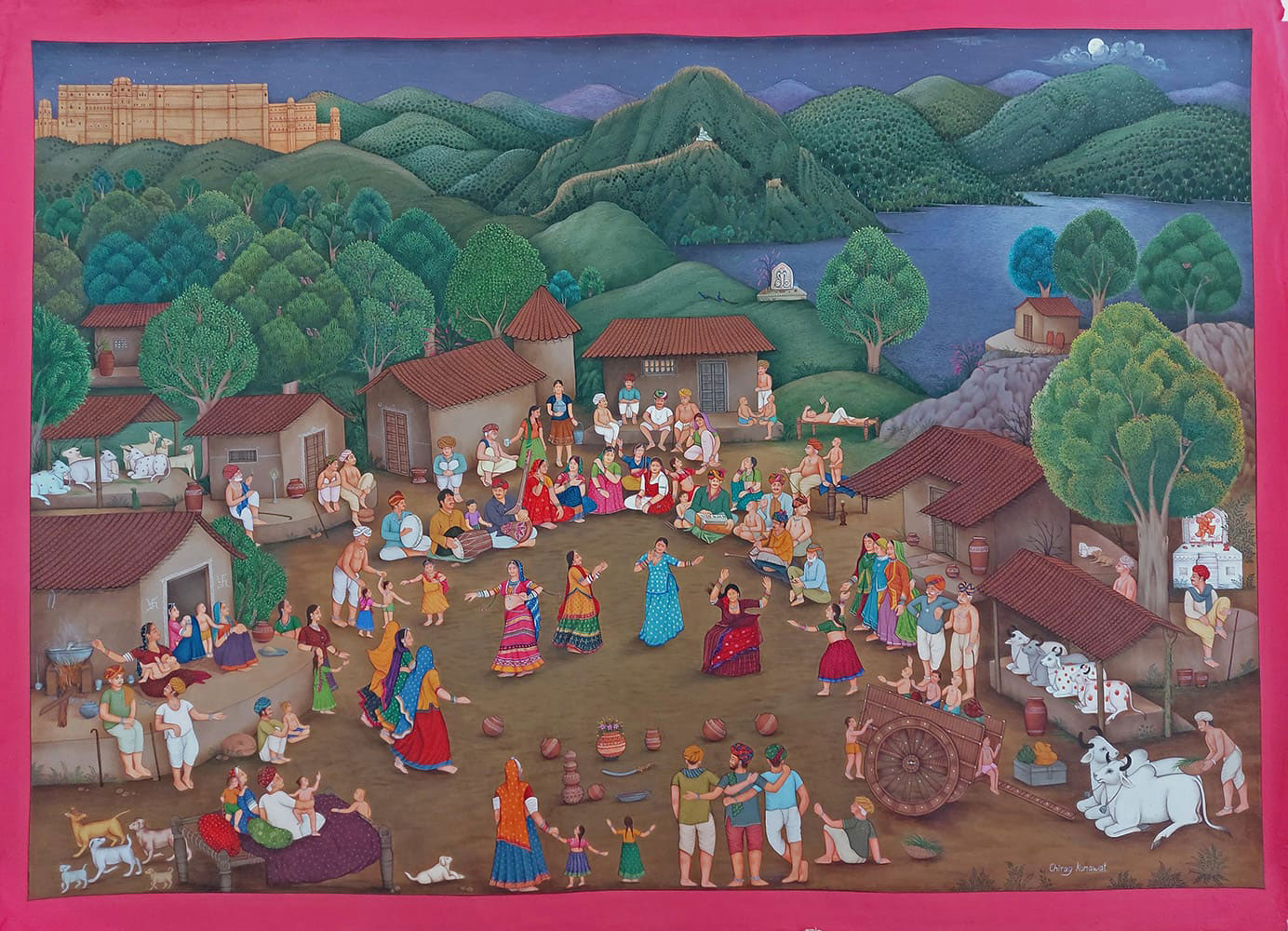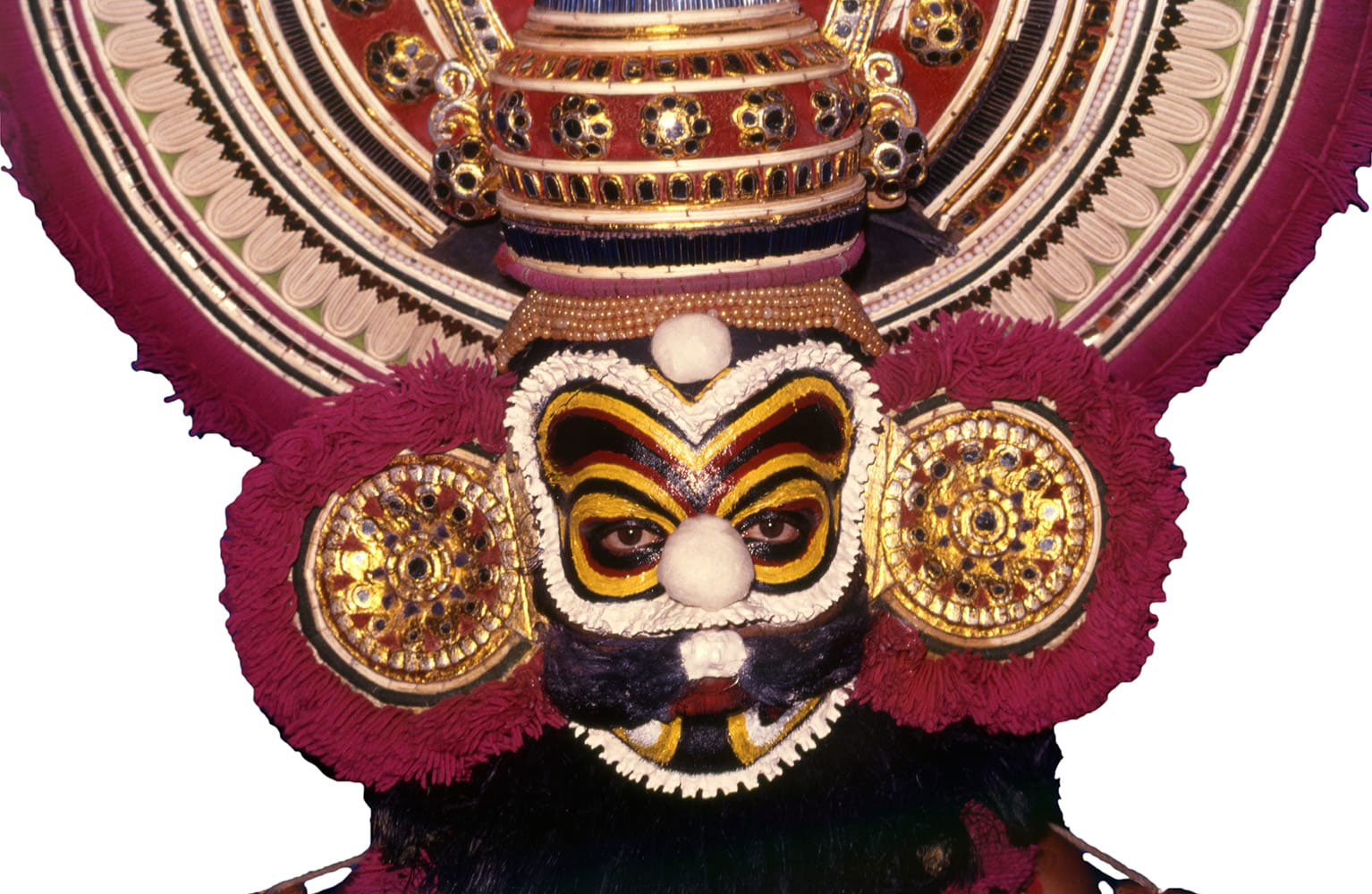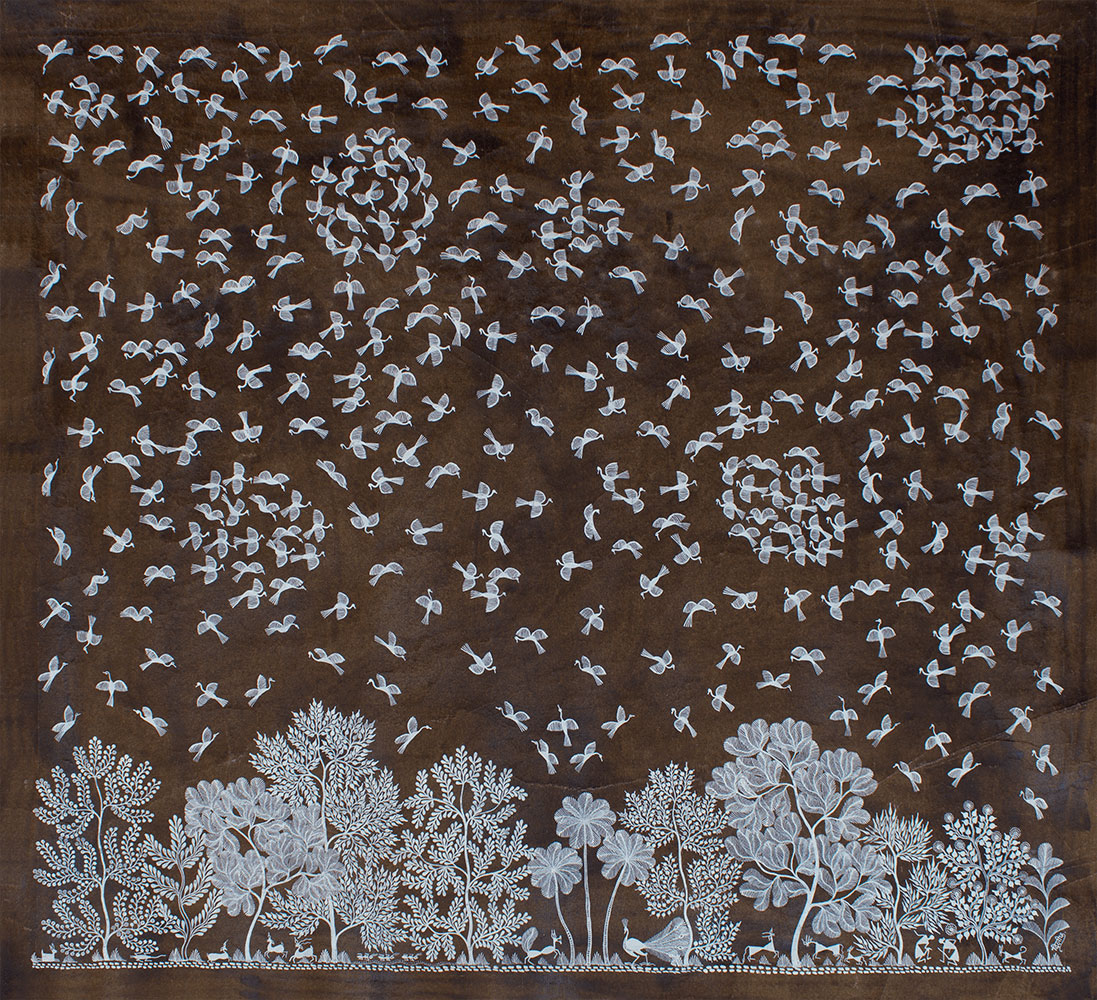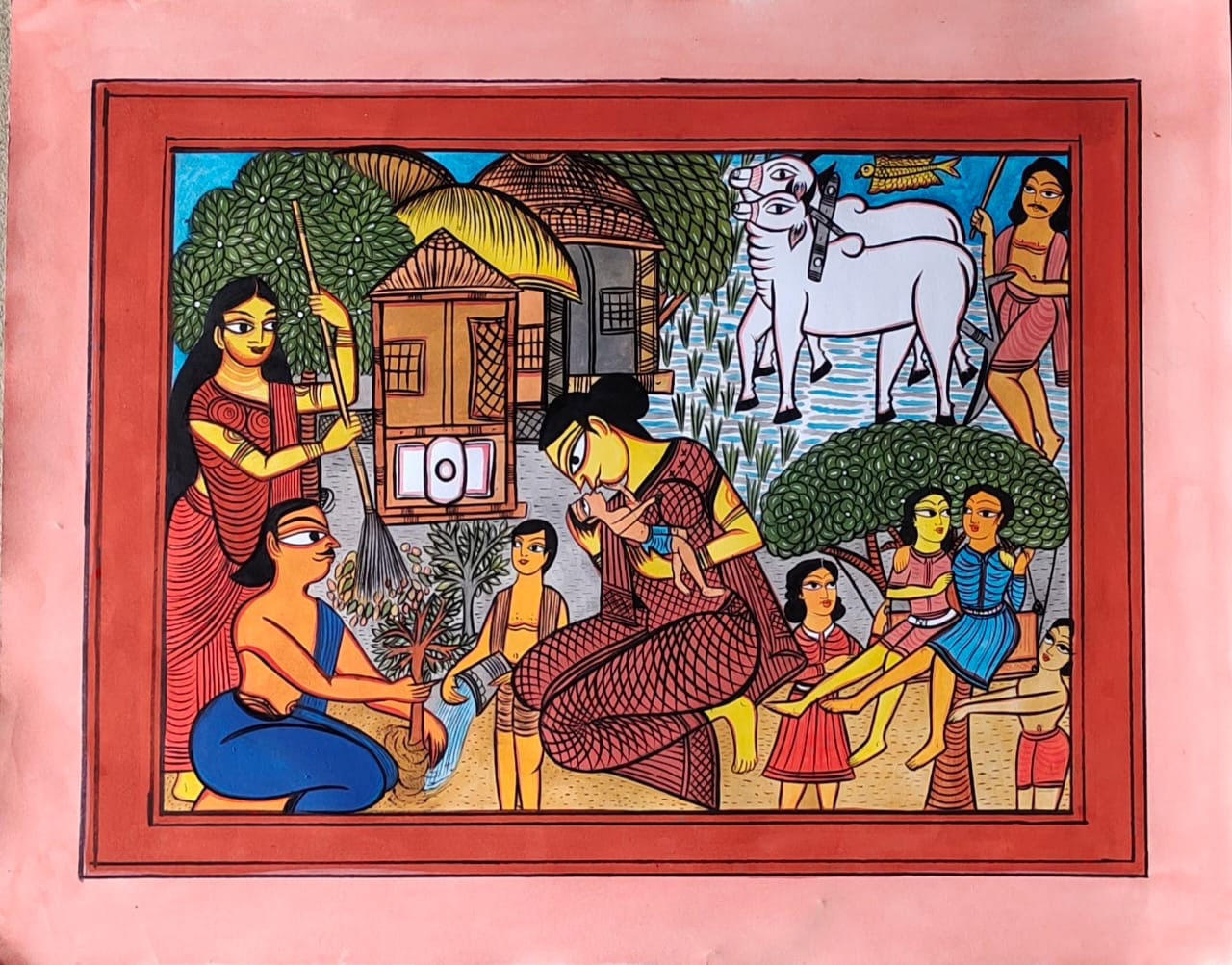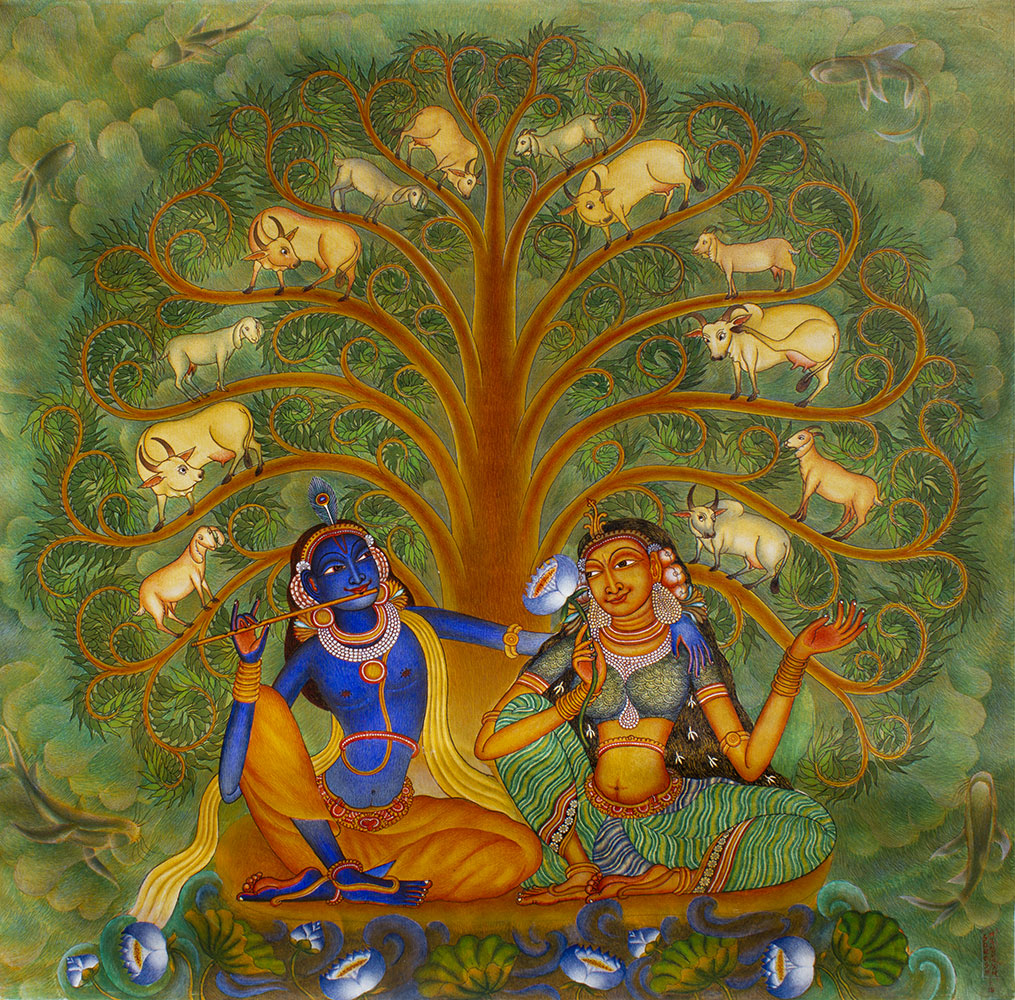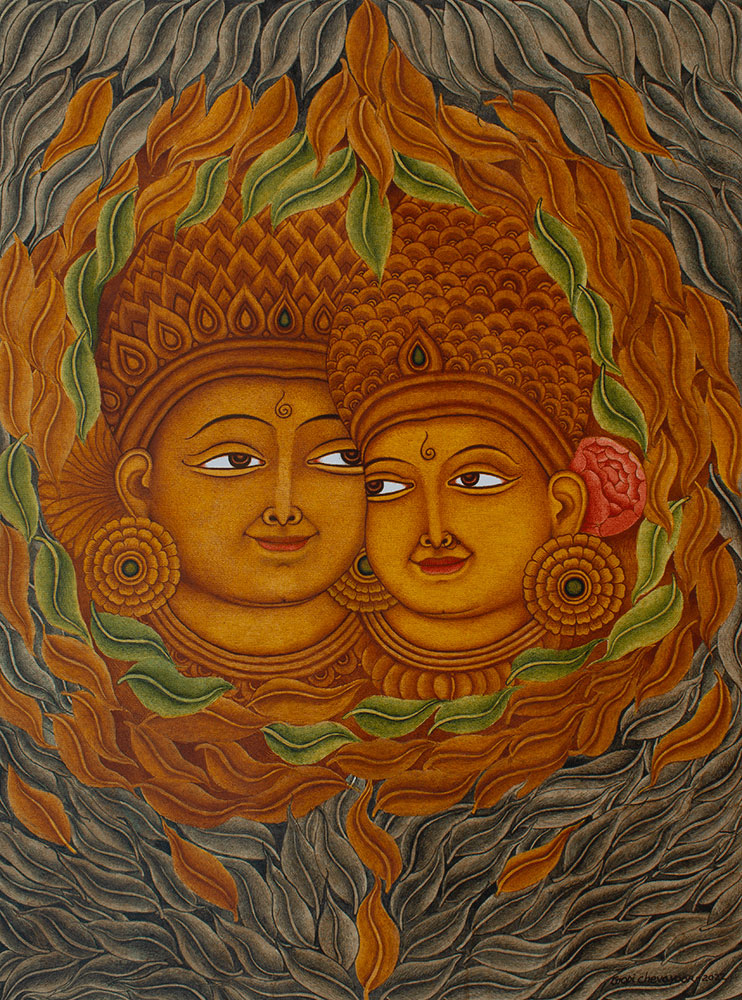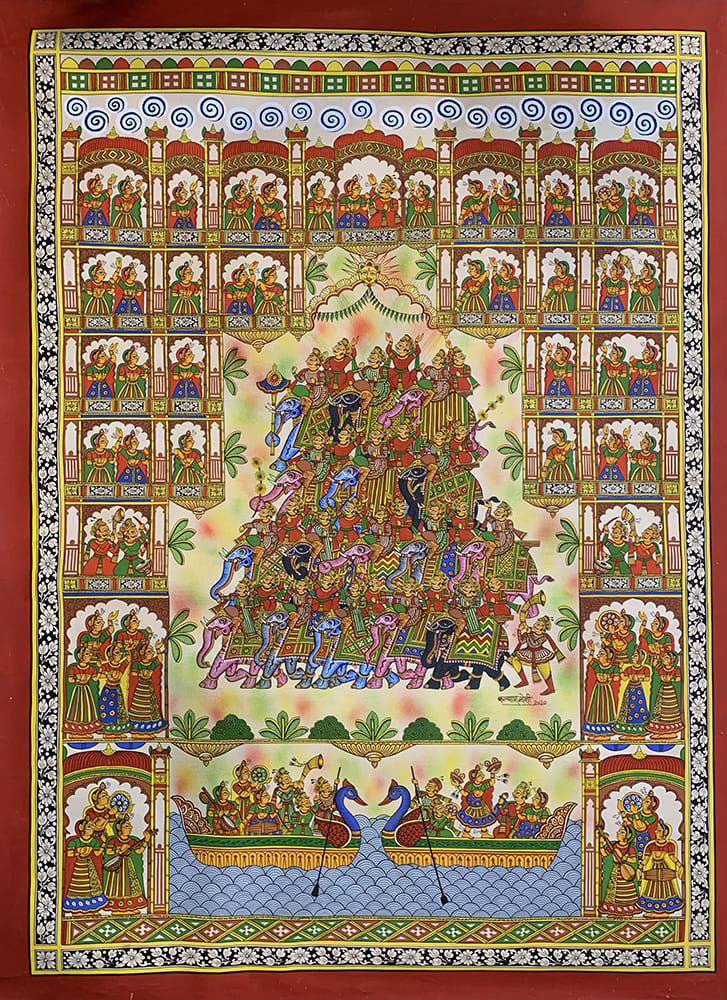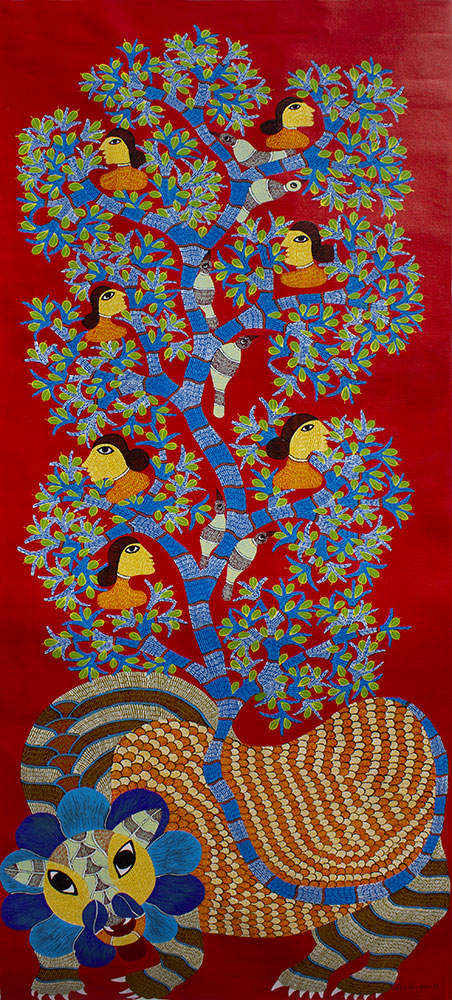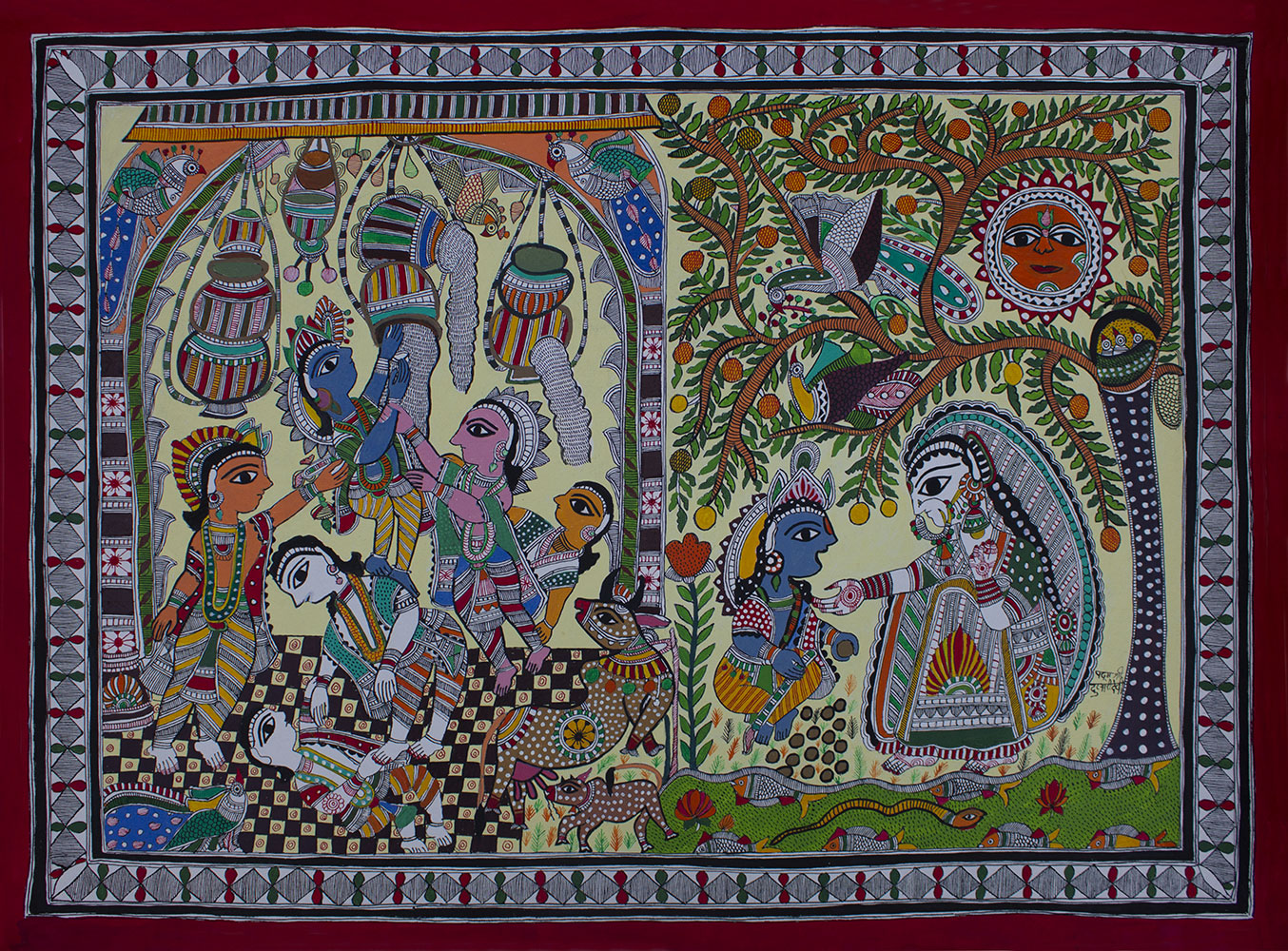Rasa can be explained as the emotional state of mind, and has formed an important aspect of Indian aesthetic understanding for centuries. The Navarasa, or the nine emotional states, come from the treatise of Bharata Muni, the Natyashastra. The chapters detail the aesthetically determined practice of diverse arts recognised as part of drama, containing within it dance, music and poetics, along with general directions of form and expression. While not directly associated with visual arts, the Navarasa continues to be an unending source of material to explore the arts in different forms – simply because it speaks of the depth and purity of emotion, to be shared with the ‘rasik’ or viewer, partaking in the artist’s expression and sharing the moment in an elevated state of mind.
The concept of the Navarasa is deeply embedded in our narrative styles of visual depiction, be it sculptural panels, mural paintings or performative Pattachitra. We have several salient and ancient histories of sacred and secular story-telling that reflect almost every aspect of human life through the nine emotions: Adbutha (surprise/wonder) Bhayanaka (terror/fear), Bibhatsya (disgust), Hasya (laughter/mirth), Karuna (sorrow/empathy), Raudra (anger), Shantha (peace or tranquillity) , Shringara (love/beauty), and Veera (heroism/courage) ; and all the interconnecting states of feeling.
The exhibition draws together works by selected contemporary indigenous artists, whose oeuvres showcase technical expertise as well as an ability to visualise and communicate reservoirs of ancestral knowledge through their distinct styles. They are deeply embedded in regional histories across the sub-continent; yet each of them is also making an attempt to step outside the established framework of that history – technically, aesthetically, formally and/or conceptually – generating space for responsiveness to altered curatorial contexts, and the possibility of presenting fresh views of existing themes and formats. These are living forms of heritage; voices and stories that build a connection between our past and present. Another layer behind the conceptualisation of the show is the prevalent discussion of human emotional capacity and the whole gamut of social experiences in the current times.

NV GC 2
Navarasa | Kerala Mural
Acrylic on Canvas | 2021
44 x 33 In | Price : INR 1,33,000
During a performance, the facial expressions and the body language of the dancer or actor can cause the audience to experience the dominant emotion vividly. The former is the state of mind, ‘becoming’ or bhava, and the latter experience is the rasa. Rasa is the shared aesthetic flavour in art, that connects the artist and the audience. A prominent part of Indian artistic theory for centuries, the original 8 rasas or emotional states were described in the Natyashastra treatise by Bharata Muni (attributed to him sometime between 200 BC and 200 AD). These are Shringara (love/attraction), Hasya (laughter/comedy), Karuna (sorrow/compassion), Raudra (anger), Veera (heroism/courage), Bhayanaka (terror/fear), Bibhatsya (disgust), Adbutha (surprise/wonder). The ninth rasa, Shantha (peace or tranquillity) was added by the Tantric scholar Abhinavagupta at a later stage, and the compilation was termed as Navarasa.
Conveying a direct interpretation of the classical theme of Navarasa, Gopi Chevayur makes an intense and extensive study of Kathakali actor (Padma Bhushan) Madavoor Vasudevan Nair in his stages of becoming, or personifying the different bhavas. In his composition, he creates nine faces laid out in a grid, against a background of foliage that for him represents a sense of calm.


